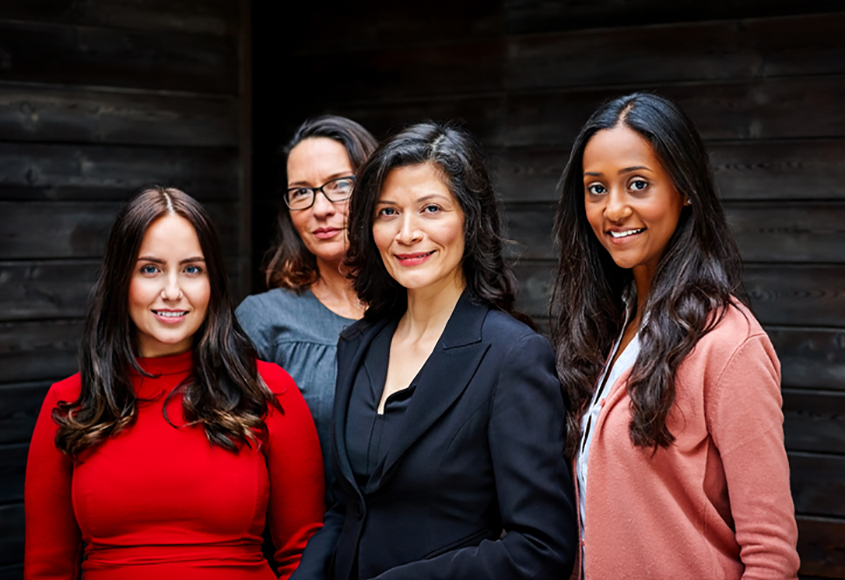Equally Valued. Equally Qualified. Equally Served.
Women veterans, who make up 10% of veterans and less than 2% of women, have traditionally been underrepresented in research.
The purpose of Women Veterans Research:
- Make statistical analyses and other research easily accessible.
- Inform policy decisions and the national narrative on women veterans.
- Serve as a repository of both statistical analysis and links to applicable external research.
Search the DOL Resource Library
The DOL Resource Library serves as a repository of the Department of Labor. All our findings are under the Resource Topic Women Veterans Research and are categorized by the Resource Tags listed below. One finding can have multiple Resource Tags. See all the findings pertaining to Women Veterans Research in the DOL Resource Library.
Or select a Resource Tag for a more targeted search
Latest Findings
HIGHLIGHTED FINDING
Improving Support for Veteran Women
Published Date: September 1, 2022
“Women's military experiences and post-service needs often differ from those of men. The current U.S. veteran population includes 2 million women—and that number is growing. However, policies and programs to support veterans' transitions to civilian life often fall short in meeting the needs of veteran women.”
Working Women Data and Statistics, Department of Labor Women’s Bureau
Published Date: January 7, 2022
This webpage provides the most recent statistics on women in the labor force, including occupations, earnings, and labor force participation by location or presence of children. It also includes charts showing labor force participation, unemployment rates, and educational attainment of women veterans, as compared to male veterans or women nonveterans.
Women Veterans in STEM: Recommendations to Strengthen the Pipeline From Service to STEM
Published Date: July 1, 2021
“While many programs and support services exist for veterans, very few are tailored to women veterans, and there is no system in place to unify these resources in a cohesive and effective way. As a result, the needs of women veterans are often overlooked...In March 2021, Education Development Center (EDC) led a virtual convening on recruiting and retaining women veterans in the STEM workforce, particularly those from populations currently underrepresented in STEM...
Psychosocial Risk Factors for Transitions Into Housing Instability Among Women Veterans
Published Date: March 1, 2021
Preventing and ending homelessness for women veterans, a priority of the Department of Veterans Affairs (VA), can be aided by identifying factors that increase their risk for housing instability. This study relied on data from the Veterans Health Administration’s universal screen for housing instability from Fiscal Year 2013 to 2016, and administrative data from electronic medical records. Using logistic regression, we compared 2 groups of women veterans: those who consistently had stable housing and those who transitioned to unstable housing after a period of housing stability.
Read more Women Veterans Research findings in the DOL Resource Library.
Unemployment Rates By Gender and Veteran Status
July 2023 – June 2024 Averaged*
Women Veterans 3.3%,
Women Nonveterans 3.5%,
Male Veterans 3.0%,
Male Nonveterans 3.9%.
*12-month moving average generated using unpublished Veterans data tables from the Veterans package obtained from the U.S. Bureau of Labor Statistics: Table 1. Employment status of persons by veteran status, age, race, Hispanic or Latino ethnicity, and sex, not seasonally adjusted.
Source: bls.gov (Current Population Survey)
Serving Women Veterans: NVTI Podcasts
In this episode of the NVTI Podcast Series, four veteran women share their personal journeys along with advice for veteran service providers.
NVTI Podcasts, Episode 9 (nvti.org)
Supporting Women Veterans
At DOL VETS, we provide the same services and support to women veterans as we do for their male counterparts. In recent years, 15-17% of the veterans who were served through the Jobs for Veterans State Grants (JVSG) program and who retained employment six months later were women! Meanwhile, only 13% of veterans in the workforce are women.
Lessen the Gender Wage Gap
An exploratory analysis even showed that women veterans using these services experienced less of a gender wage gap than women nonveterans using comparable services. Veterans receive priority of service for all DOL funded employment programs, and veterans with significant barriers to employment may receive more intensive case management.
Veteran and Non-Veteran Job Seekers (PDF)
Other Resources
Women Veteran Resources
- Womens Bureau Charts
- VA Center For Women Veterans (va.gov)
- National Association of State Women Veteran Coordinators (naswvc.org)
- Defense Advisory Committee on Women in the Services (defense.gov)
Employment Resources
